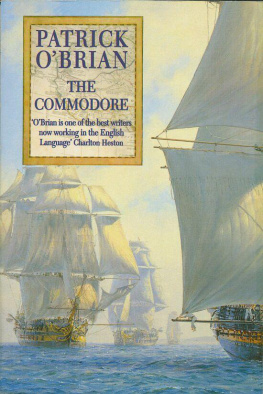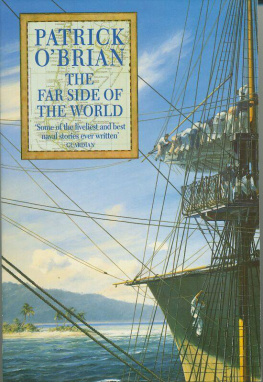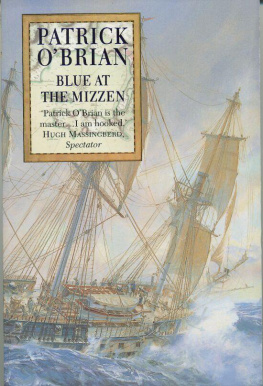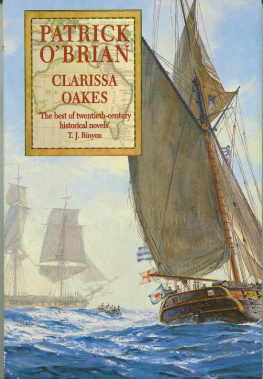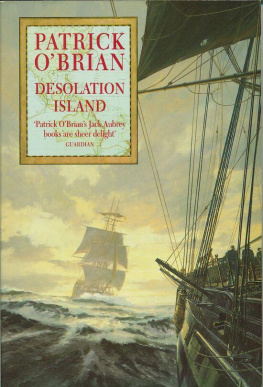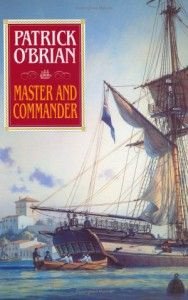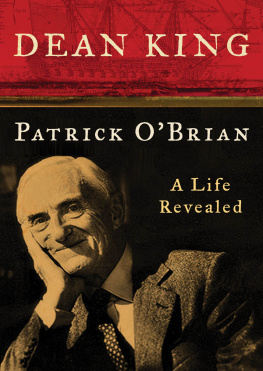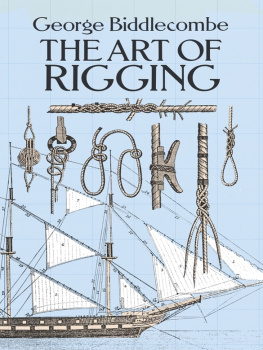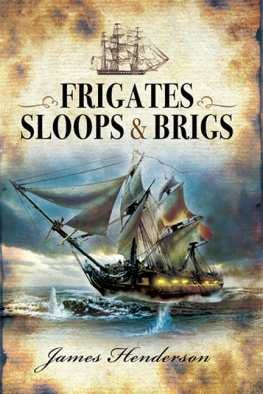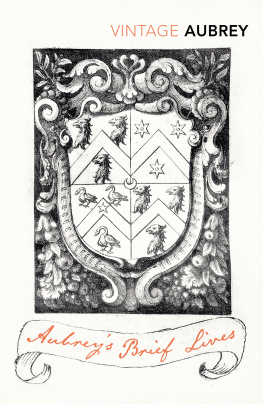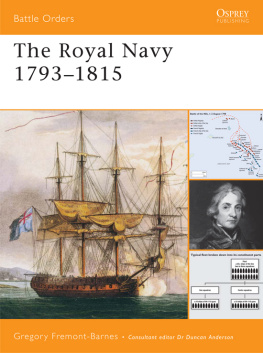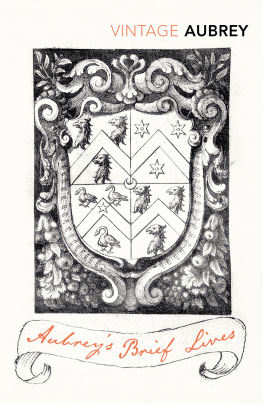MASTER AND COMMANDER
Patrick O'Brian is the author of the acclaimed Aubrey-Maturin tales and the biographer of Joseph Banks and Picasso. His first novel, Testimonies, and his Collected Short Stories have recently been reprinted by HarperCollins. He translated many works from French into English, among the novels and memoirs of Simone de Beauvoir and the first volume of Jean Lacouture's biography of Charles de Gaulle. In 1995 he was the first recipient of the Heywood Hill Prize for a lifetime's contribution to literature. In the same year he was awarded the CBE. In 1997 he was awarded an honurary doctorate of letters by Trinity College, Dublin. He died in January 2000 at the age of 85.
The Works of Patrick O'Brian
The Aubrey/Maturin Novels
in order of publication
MASTER AND COMMANDER
POST CAPTAIN
HMS SURPRISE
THE MAURITIUS COMMAND
DESOLATION ISLAND
THE FORTUNE OF WAR
THE SURGEON'S MATE
THE IONIAN MISSION
TREASON'S HARBOUR
THE FAR SIDE OF THE WORLD
THE REVERSE OF THE MEDAL
THE LETTER OF MARQUE
THE THIRTEEN-GUN SALUTE
THE NUTMEG OF CONSOLATION
CLARISSA OAKES
THE WINE-DARK SEA
THE COMMODORE
THE YELLOW ADMIRAL
THE HUNDRED DAYS
BLUE AT THE MIZZEN
Novels
TESTIMONIES
THE CATALANS
THE GOLDEN OCEAN
THE UNKNOWN SHORE
RICHARD TEMPLE
CAESAR
HUSSEIN
Tales
THE LAST POOL
THE WALKER
LYING IN THE SUN
THE CHIAN WINE
COLLECTED SHORT STORIES
Biography
PICASSO
JOSEPH BANKS
Anthology
A BOOK OF VOYAGES
HarperCollinsPublishers
77-85 Fulham Palace Road,
Hammersmith, London W6 8JB
www.HarperCollins.co.uk
This paperback edition 2003
Previously published in B-format paperback
by HarperCollins 1996
Reprinted four times
Also published in paperback by HarperCollins 1993
Reprinted three times
Also published in paperback by Fontana 1971
Reprinted thirteen times
First published in Great Britain by
HarperCollins Publishers 1970
Copyright The estate of the late Patrick O'Brian CBE 1970
Patrick O'Brian asserts the moral right to
be identified as the author of this work
ISBN 978-0-00-649915-2
Set in Imprint by
Rowland Phototypesetting Ltd.
Bury St. Edmunds, Suffolk
Printed and bound in Great Britain by
Clays Ltd, St. Ives plc
All rights reserved. no part of this publication may be reproduced, stored in a retrieval system, or transmitted, in any form or by any means, electronic, mechanical, photocopying, recording or otherwise, without the prior permission of the publishers.
This book is sold subject to the condition that it shall not, by way of trade or otherwise, be lent, re-sold, hired out or otherwise circulated without the publisher's prior consent in any form or binding or cover other than that in which it is published and without a similar condition including this condition being imposed on the subsequent purchaser.
MARIAE LEMBI NOSTRI
DUCI ET MAGISTRAE
DO DEDICO
AUTHOR'S NOTE
When one is writing about the Royal Navy of the eighteenth and early nineteenth centuries it is difficult to avoid under statement; it is difficult to do full justice to ones subject; for so very often the improbable reality outruns fiction. Even an uncommonly warm and industrious imagination could scarcely produce the frail shape of Commodore Nelson leaping from his battered seventy-four-gun Captain through the quarter-gallery window of the eighty-gun San Nicolas, taking her, and hurrying on across her deck to board the towering San Josef of a hundred and twelve guns, so that on the deck of a Spanish first-rate, extravagant as the story may seem, did I receive the swords of the vanquished Spaniards; which, as I received, I gave to William Fearney, one of my bargemen, who put them, with the greatest sang-froid, under his arm.
The pages of Beatson, James and the Naval Chronicle, the Admiralty papers in the Public Record Office, the biographies in Marshall and OByrne are filled with actions that may be a little less spectacular (there was only one Nelson), but that are certainly no less spiritedactions that few men could invent and perhaps none present with total conviction. That is why I have gone straight to the source for the fighting in this book. From the great wealth of brilliantly-fought, baldly-described actions I have picked some I particularly admire; and so when I describe a fight I have log-books, official letters, contemporary accounts or the participants own memoirs to vouch for every exchange. Yet, on the other hand, I have not felt slavishly bound to precise chronological sequence; and the naval historian will notice, for example, that Sir James Saumarez action in the Gut of Gibraltar has been postponed until after the grape-harvest, just as he will see that at least one of my Sophies battles was fought by quite another sloop, though one of exactly the same strength. Indeed, I have taken great liberties; I have seized upon documents, poems, letters; in short, jai pris mon bien l o je lai trouv, and within a context of general historical accuracy I have changed names, places and minor events to suit my tale.
My point is that the admirable men of those times, the Cochranes, Byrons, Falconers, Seymours, Boscawens and the many less famous sailors from whom I have in some degree compounded my characters, are best celebrated in their own splendid actions rather than in imaginary contests, that authenticity is a jewel; and that the echo of their words has an abiding value.
At this point I should like to acknowledge the advice and assistance I have had from the patient, erudite officials of the Public Record Office and of the National Maritime Museum at Greenwich, as well as the commanding Officer of HMS Victory: no one could have been kinder or more helpful.
P. OB.
Chapter One

The music-room in the Governor's House at Port Mahon, a tall, handsome, pillared octagon, was filled with the triumphant first movement of Locatelli's C major quartet. The players, Italians pinned against the far wall by rows and rows of little round gilt chairs, were playing with passionate conviction as they mounted towards the penultimate crescendo, towards the tremendous pause and the deep, liberating final chord. And on the little gilt chairs at least some of the audience were following the rise with an equal intensity: there were two in the third row, on the left-hand side; and they happened to be sitting next to one another. The listener farther to the left was a man of between twenty and thirty whose big form overflowed his seat, leaving only a streak of gilt wood to be seen here and there. He was wearing his best uniformthe white-lapelled blue coat, white waistcoat, breeches and stockings of a lieutenant in the Royal Navy, with the silver medal of the Nile in his buttonholeand the deep white cuff of his gold-buttoned sleeve beat the time, while his bright blue eyes, staring from what would have been a pink-and-white face if it had not been so deeply tanned, gazed fixedly at the bow of the first violin. The high note came, the pause, the resolution; and with the resolution the sailor's fist swept firmly down upon his knee. He leant back in his chair, extinguishing it entirely, sighed happily and turned towards his neighbour with a smile. The words 'Very finely played, sir, I believe' were formed in his gullet if not quite in his mouth when he caught the cold and indeed inimical look and heard the whisper, 'If you really must beat the measure, sir, let me entreat you to do so in time, and not half a beat ahead.'
Next page

